Scientific name Gomphotheriidae | Superfamily †Gomphotherioidea Rank Family Higher classification Proboscidea | |
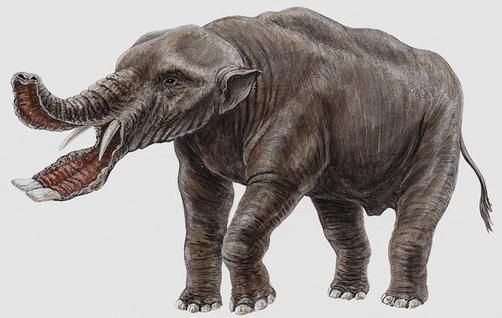 | ||
Lower classifications Gomphotherium, Platybelodon | ||
Fossil elephants gomphotheres
Gomphotheres are any members of the diverse, extinct taxonomic family Gomphotheriidae. Gomphotheres were superficially elephant-like proboscideans. They were widespread in North America during the Miocene and Pliocene epochs, 12–1.6 million years ago. Some lived in parts of Eurasia, Beringia, and following the Great American Interchange, South America. Beginning about 5 million years ago, they were gradually replaced by modern elephants, apart from the last two South American genera, of which Cuvieronius did not become extinct until possibly as recently as 9,100 BP, and Stegomastodon fossils have been dated to as recently as 6,060 BP in the Valle del Magdalena, Colombia. These gomphotheres also survived in Mexico and Central America until the end of the Pleistocene.
Contents
- Fossil elephants gomphotheres
- What does gomphothere mean
- Description
- Taxonomy
- Diet
- Possible cause for extinction
- Associations with early human sites
- References
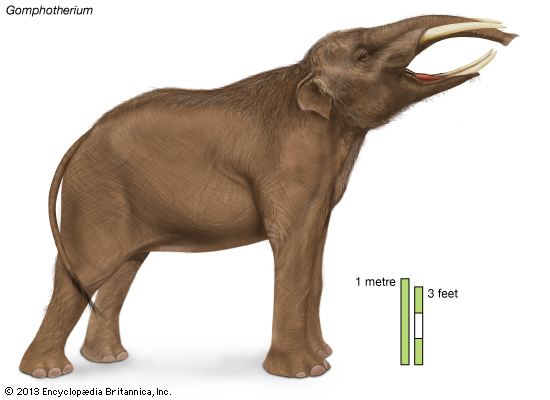
The name "gomphothere" comes from Ancient Greek γόμφος, "peg, pin; wedge; joint" plus θηρίον, "beast".
What does gomphothere mean
Description
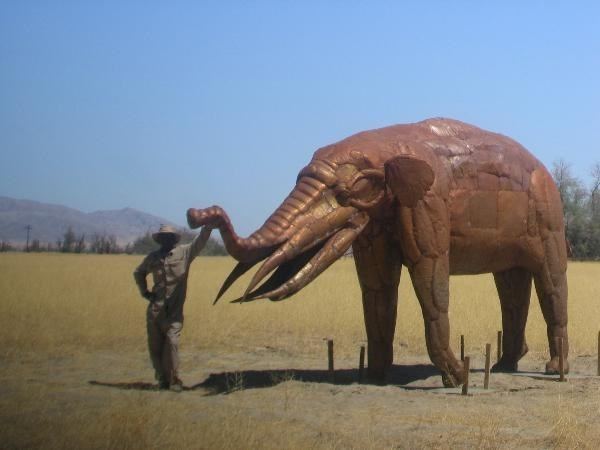
Gomphotheres differed from elephants in their tooth structure, particularly the chewing surfaces on the molar teeth. Most had four tusks, and their retracted facial and nasal bones prompt paleontologists to believe that gomphotheres had elephant-like trunks.
Taxonomy

Both the genus Gomphotherium and family Gomphotheriidae were erected by the German zoologist Karl Hermann Konrad Burmeister (1807-1892) in 1837.
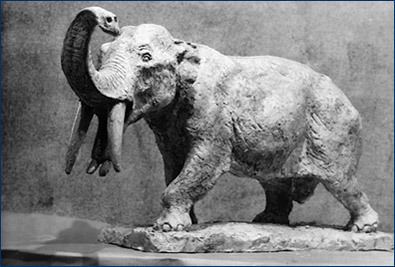
The genera Anancus, Morrillia, Paratetralophodon, and Tetralophodon, but also Choerolophodontidae and Amebelodontidae were formerly classified as gomphotheres, but recent work recovers gomphotheres sensu lato, as paraphyletic, with tetralophodont gompotheres closely related to Elephantidae and amebelodonts and choerolophodonts more primitive than trilophodont gomphotheres.
Diet

Isotopic analyses for South American gomphotheres suggest a wide diet for Notiomastodon platensis except for the localities in Santiago del Estero and La Carolina in Ecuador. Isotope analyses suggested an exclusive C4 diet, whereas every other South American locality indicate an exclusive C3 or mixed C3 and C4 diet. The results also support the latitudinal gradient of C3 and C4 grasses. The stereomicrowear analyses for N. platensis exhibited average scratch and pit values, which place it within the extant mixed-feeder morphospace and the higher frequency of fine scratches indicated the ingestion of C3 grasses. Alternatively, the presence of coarse and hypercoarse scratches along with gouges and large pits suggested the ingestion of foliage and lignified portions. The plant microfossil analysis recovered fragments of conifer tracheid and vessel elements with a ray of parenchyma cells, which corroborates the consumption of wood plants, pollen grains, spores, and fibers. The Aguas de Araxa gomphotheres were feeding generalists and consumed wood elements, leaves, and C3 grasses. Cuvieronius specimens from Chile were exclusively C3 plant eaters, whereas specimens from Bolivia and Ecuador had a mixed C3 and C4 diet. Notiomastodon showed a wider range of dietary adaptations. Specimens from Quequen Salado in Buenos Aires Province were entirely C3 feeders, whereas the diet of specimens from La Carolina Peninsula in Ecuador was exclusively C4.
Possible cause for extinction
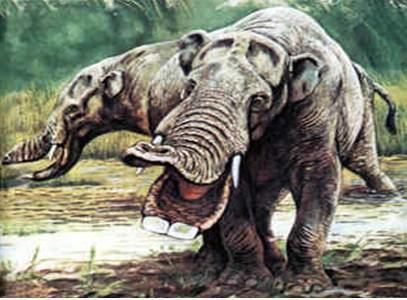
The results confirm that the ancient diet and diet habits cannot always be interpreted solely from dental morphology or extrapolated from present relatives. The data from middle and late Pleistocene periods point out that over time, there was an adaptive change in dietary resources, away from one that favored predominantly mixed-feeders to more specialized feeders, and that this dietary evolution was one of the contributing causes that forced gomphotheres toward extinction in the late Pleistocene in South America. The remaining population probably succumbed to climatic change and/or human predation around the time of the Holocene margin.
Associations with early human sites
Gomphothere remains are common at South American Paleo-indian sites. Examples include the early human settlement at Monte Verde, Chile, dating to approximately 14,000 years ago, and the Valle del Magdalena, Colombia. In 2011, remains dating between 10,600 and 11,600 years ago were also found in the El Fin del Mundo (End of the World) site in Sonora, Mexico's Clovis location – the first time such an association was found in a northern part of the continent where gomphotheres had been thought to have gone extinct 30,000 years ago. In July 2014, it was announced that the "position and proximity of Clovis weapon fragments relative to the gomphothere bones at the site suggest that humans did in fact kill the two animals there. Of the seven Clovis points found at the site, four were in place among the bones, including one with bone and teeth fragments above and below. The other three points had clearly eroded away from the bone bed and were found scattered nearby."
